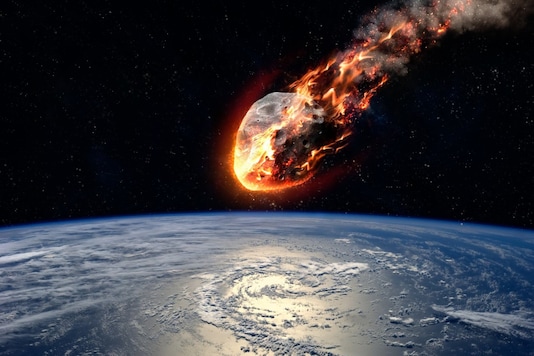Researchers in the US have found that the asteroid named 2008 TC3 that exploded in the atmosphere of the Earth in 2008 was part of a space rock that contained water.
The new discovery was made when researchers analysed a fragment of Almahata Sitta meteorite, reported Daily Mail. These meteorites were named after the location where they exploded.
Researchers have found an amphibole crystal in this fragment of an asteroid. Amphiboles have hydroxyl groups that can remain stable only in the presence of water. Based on the presence of a kind of amphibole crystal, it has been found that due to intermediate temperature and pressure, this parent asteroid formed in the presence of water.
The Almahata Sitta meteorite is one of the 600 meteorites that was formed after the asteroid exploded in Sudan over a decade ago. When the explosion had happened, witnesses had said that it looked like a fireball. It is a kind carbonaceous chondrite (CC) stone.
The meteorite has been kept at the University of Khartoum, Sudan, and researchers from the US have taken a fragment for the analysis. It has been found that the parent body was 640 to 1,800 kilometres in diameter, a size similar to a dwarf planet.
The findings of this study have been published in the peer-reviewed journal Nature Astronomy. It publishes research in the field of planetary sciences, astronomy and astrophysics.
Vicky Hamilton, author of this study said, “Our surprising result suggests the existence of a large, water-rich parent body.” Vicky is from the Southwest Research Institute in Boulder, Colorado, US. He also said that the fragment they were given to study was 50-milligram in weight.
The scientists examined the composition of the fragment with the help of an infrared microscope. Some of the meteorites have minerals which point towards the presence of water while the composition of other meteorites indicates that there was heating in the absence of water.
The significance of carbonaceous chondrite stones is that analysing them can give details about the history of the parent body and about the early stages of the solar system. Some of the asteroids are from as far back as 4.5 billion years ago, at the time of formation of our social system.
It is rare to find amphiboles in carbonaceous chondrite stones. It was found as a trace component previously in 1969 in Mexico in the Allende meteorite.
